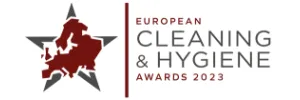News & Insights
Read the latest news from us and our clients across the globe

Posted on 1 February 2016 by adtrak.admin
Turning the Spotlight on Food and Furnishings
Steve Eminton, editor of letsrecycle.com discusses how to implement successful schemes for re-use and recycling across major estates.
Facilities managers are leading the way with the green transformation of estates, and considering the huge financial savings that can be made it’s no surprise. Alongside the introduction of renewable energy schemes, the FM sector has made great headway in two key areas of resource use: food and furniture.

Food
Food waste has been under the spotlight in recent years, with shocking statistics emerging about the amount of food that gets thrown away each year by businesses and households. Plate waste from cafeterias and restaurants can be notoriously tricky to deal with due to contamination from packaging and even cutlery, yet estates managers are finding it’s worth persevering with.
Here’s why:
- Reduced landfill costs – food waste tends to be heavier than most other waste streams due to the amount of water it contains. Waste management contracts are often priced according to weight, as disposal costs are determined by tonnage rather than volume. By reducing the amount of food in the general waste stream, overall waste disposal costs can be cut dramatically.
- Maximising the value of recyclable materials – a tonne of paper, plastics, glass or metal each has a particular market value, largely determined by the cleanliness of the waste stream. Paper, for example, cannot be recycled if it is contaminated with wet wastes such as food, and so cannot be sold to the recycling industry. The rebates that can be recovered for recyclable materials therefore depend on the quality and cleanliness of those materials. Keeping food waste out of the dry materials bins maximises the value of these recyclable waste streams – and can make a big difference to the cost of a waste contract.
- Food redistribution schemes – unsold food that is still suitable for human consumption can be redistributed via charitable organisations to homeless shelters and other groups in need. Charities such as FareShare have formed hundreds of partnerships with different types of food outlets, reducing disposal costs and providing corporate responsibility benefits.
- Re-use of materials – starch-rich surplus foodstuffs can be recovered, reprocessed and converted into high quality ingredients for use in animal feed. When this option is not possible, food waste can be treated in anaerobic digestion facilities and converted into biogas, which in turn is used to generate clean electricity.
Some large estates have been very successful with their food waste schemes. The secret, they say, is investing enough time in working with tenants and making sure they understand the rules and the benefits to the bottom line. Staff participation is key, as is making sure bins are monitored and emptied regularly.
Furniture
Furnishings are another major area in which facilities management professionals have been pioneering new green approaches – and reducing costs in the process.
Internal re-use schemes have become easily deliverable with web-based platforms that document and track items through the company. The main challenge with any internal re-use programme is storage, but where space exists it can pay for itself within a matter of months.
Ultimately, it’s far cheaper to store unwanted furniture for re-use, than it is to pay to have furniture taken away, and then pay for new furniture. Standardising procurement, so for example, all new chairs and tables have to be of a certain design, can make re-use schemes much easier to implement in the long run.
Research has shown that a typical breakdown of a container-load of non-residential furniture is 50% re-usable instantly, with a further 25% re-usable with a little repair.
Estates managers usually assign an individual to the role of inspecting and cataloguing items, and adding a photo and brief detail to an internal website. When staff need to purchase new equipment they are required first of all to check the catalogue for the item they’re looking for.
This saves each department money, as well as reducing disposal costs. The carbon benefits can also be calculated, giving a positive environmental and economic story to share with staff, customers and investors.
Celebrating resource efficiency success
By addressing the two key resource flows of food waste and furniture, facilities managers are demonstrating that doing good for the environment and doing good for the business go hand in hand.
Environmental programmes are no longer considered niche, and if packaged correctly it’s possible to persuade even the most business-hardened directors that re-use and recycling are the way forward for any successful business.
As an added incentive, successful environmental programmes can also win awards. The Awards for Excellence in Recycling and Waste Management, organised by letsrecycle.com, celebrate positive resource management examples from UK businesses, and are free to enter. To find out more visit www.awardsforexcellence.co.uk
Published in Building & Facilities Management – January 2016
Experts in Public Relations Services & Communications Management
Our ServicesGenuine industry specialists in cleaning and hygiene, environmental and recycling, and facilities management
Our Sectors












